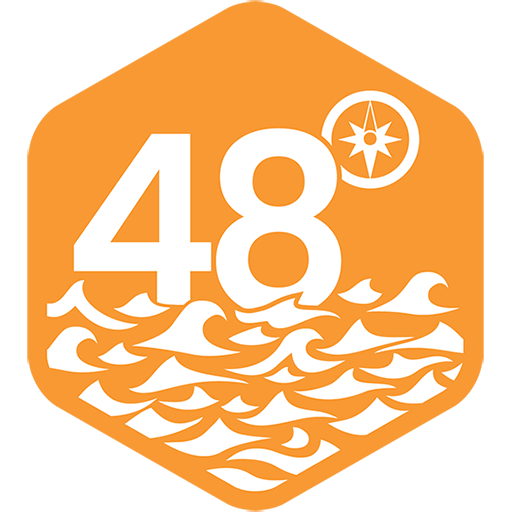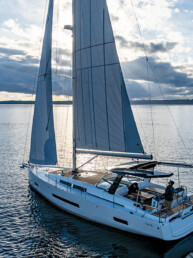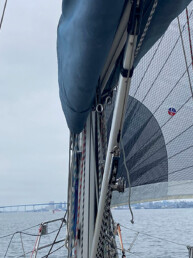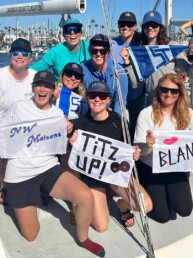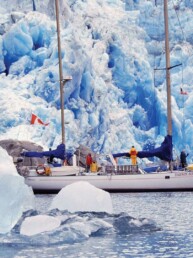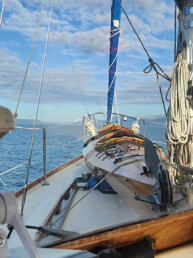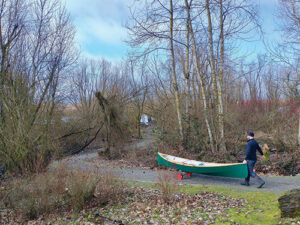
I never want to go sailing on a lake. The boundaries are known, I can see the destination; the horizon of possibilities is limited. I paddle or sail around, and around, and around. If racing around the marks is your game, then maybe the placid waters of a lake are for you. If wandering is in your soul, like mine, then a lake is a kind of prison.
On a river in my rowboat or sailboat, even if I have just a few hours, there’s possibility. Although it’s unlikely and irresponsible, there’s the chance that I just might keep going and going and not turn back towards home. Things wash downstream, sometimes including me and my small craft. Conditions change based on rain and tide. The flow quickens; logs, sections of dock, debris, and items better left unidentified clog the waters. Come late winter and spring, for denizens of the confluence of the Willamette and the Columbia Rivers along the Oregon/Washington border, those changing conditions that make river sailing interesting, sometimes make it nearly impossible to enjoy our sport.
That’s when small boat sailors who can’t stop sailing head to the lakes. Most recently, it was on the Oregon side of the river that my friend Bill and I took our rowing craft to Smith and Bybee Lakes. Technically, the “lakes” area is a seasonal wetland, where the water rises and falls, depending on the level of the Columbia River. When the water is high, the river spreads and rises over the lake’s shallows. If you have a hand-carry boat, you might just have the place to yourself. Metro Parks, which manages the site, describes it on their website as “one of the region’s best kept secrets.”
Bill and I pushed our rowboats down the gravel path that doubles as a launch ramp, through a thicket of shrubby willows, where we quickly encountered ankle-deep mud. I probed with an oar to see if there might be solid ground beneath. It was too early in the day to lose a boot or deal with a wet sock. Luckily, the ratio of mud to water to solid ground was passable with some teamwork. With one person lifting and pushing, and the other pulling, we were able to wrestle the boats into enough water to float; once aboard, we polled ourselves into slightly deeper water. It was becoming clear why Smith and Bybee Wetlands might be such a secret.
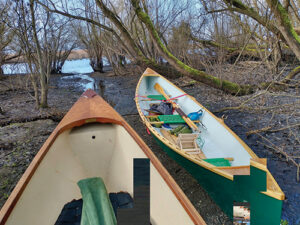
But once we were out in the sunshine, afloat on Smith Lake, there was a completely different feeling—one of brightness and joy. The mirror-like water was a welcome break from the murky, current-riddled river that is usually our sailing ground. We had escaped the thrall of the land and were free to explore. In the distance, rafts of diving ducks scooted across the lake. A heron waded near the shore. Someplace far away, a train was whistling. Although surrounded by the city and an industrial zone, we had slipped into a sliver of wild.
Gliding along the edge of rusty red and dull green willow clusters emerging from the water, we could see across the lake, but not farther down the shore. Periodically, Bill raised his binoculars—was that splash a sign of nutria or perhaps an otter? I eyed a clump of dormant tan grass, hoping to spot a secretive bittern, but instead a goofy looking coot bobbed its head as it passed me, unconcerned.
The unknown pulled us to see what was around the corner. From a map view, a clear snake-like channel connects Smith to Bybee Lake, but on the water there was no obvious distinction between a beaver-chewed break in the shrubs and the channel itself, until we nosed into it with our boats. In the calm water, it didn’t take long to find the channel, and shortly thereafter to notice a mound of sticks blocking the passage.
Bill arrived at the obstruction first, but even from a distance I was fairly certain that I knew what I was seeing: a beaver lodge. Lodges are rare on our local streams and rivers, as most beavers live in burrows, so the chance to see one up close was enchanting. Although this one looked aged, it was apparent that it wasn’t just a jumble of chewed sticks; the lodge was a piece of carefully constructed natural architecture. We spent a few minutes floating around the edges, admiring the care that the beaver took in making it before rowing past it, close to the flooded shore.
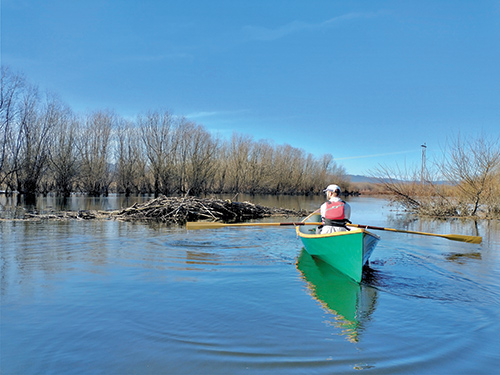
A group of dabbling ducks burst into flight when a pair of bald eagles glided by, their broad wings momentarily dominating the sky. We watched in awe as one eagle effortlessly alighted on a tall power pole, while the other skimmed the treetops and surveyed the edge of Bybee Lake, perhaps in search of dinner.
We rowed on, down a sinuous channel, easily wide enough for our wing-like oars, but not always deep enough to avoid scraping them in the shallows. As we emerged into the next lake, a couple of mergansers drifted by, their sleek feathers and hooked beaks reminding us of their prowess in catching fish below the surface.
As the afternoon wore on, a chill settled in the air. The pull of home overcame our interest in exploring and bird watching. We rowed back through the channel and towards the launch ramp, now obscured by a thicket of willows. It would be challenging to wind our way back through the flooded forest, and I lingered before heading into the shade.
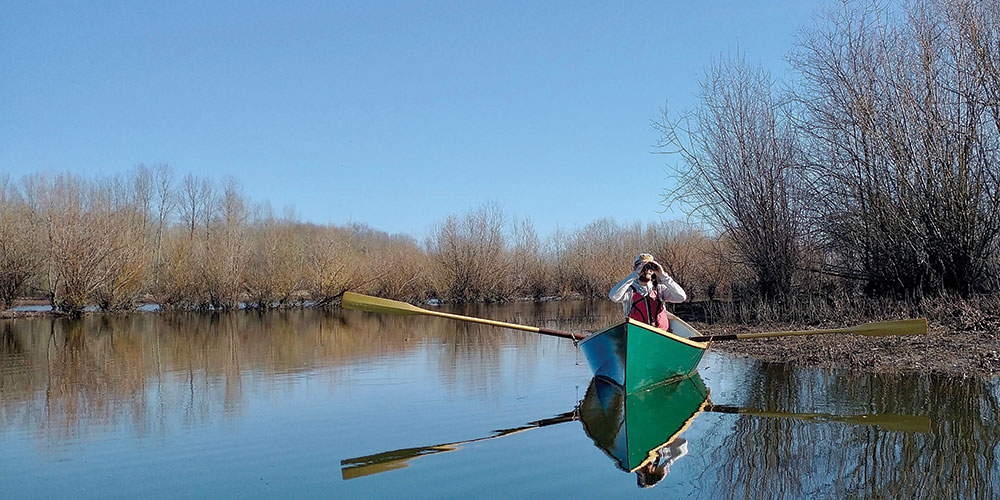
Under normal circumstances, the wide-open river is the only place for me. Yet today, with no “normal” body of water available, I’d escaped the confinement of sulking at home by going to a dreaded lake. And I had to admit, it was nice to be proved wrong. In the right conditions a lake is not a prison, after all. In fact, it’s a get-out-of-jail-free card.
Bruce Bateau sails and rows traditional boats with a modern twist in Portland, Oregon. His stories and adventures can be found at www.terrapintales.wordpress.com.
Bruce Bateau
Bruce Bateau sails and rows traditional boats with a modern twist in Portland, Ore. His stories and adventures can be found at www.terrapintales.wordpress.com
